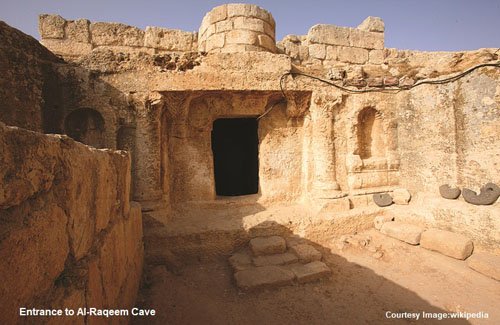The Cave of Ashabe-Kahf: A Story of Faith and Resilience
The Cave of Ashabe-Kahf, also known as the Cave of the Seven Sleepers, is a revered site shrouded in mystery and miracles. This legendary cave, mentioned in the Quran and various religious traditions, continues to capture the imagination of believers worldwide. Let’s delve into the captivating story, explore the cave’s description, and unravel the lessons it imparts.

The Story’s Origins
The Quran (Surah Al-Kahf) narrates the tale of a group of young men who sought refuge in a cave during a period of persecution against those who believed in one God. While the exact number and names remain unspecified in the Quran, Islamic tradition often refers to them as the “Seven Sleepers.” The Quran describes them as youths who “believed firmly in their Lord” (Surah Al-Kahf, verse 13) and refused to worship idols.
Divine Intervention and Miraculous Sleep
Allah (SWT) granted the young men a miraculous sleep within the cave. Their sleep stretched for an extended period, the Quran mentioning “three hundred years, and excess” (Surah Al-Kahf, verse 25). The story emphasizes the power of Allah (SWT) to suspend time and protect the faithful.
Waking to a Changed World:
When the young men awoke from their sleep, they believed they had only slept for a night. To their astonishment, the world around them had undergone a significant transformation. Christianity had become the dominant religion, replacing the persecution they had fled.
The Test of Currency:
One of the young men ventured into the city with a silver coin to buy provisions. The townspeople were bewildered by the archaic currency, revealing the vast passage of time. This event served as a sign for the community, showcasing the miraculous nature of the sleepers’ experience.

A Cave with Layers
The exact location of the Cave of Ashabe-Kahf remains a subject of debate and speculation. Numerous caves around the world lay claim to being the site, with locations in Jordan, Turkey, and even beyond, mentioned in various traditions.
The Cave’s Description
Descriptions of the cave’s interior vary depending on location and tradition. Some narratives depict a spacious cavern with a light emanating from an opening, while others describe a more modest space. The focus, however, remains on the significance of the cave as a place of refuge and divine intervention.
Lessons Learned: A Beacon of Faith
The story of the Cave of Ashabe-Kahf offers valuable and timeless lessons for believers of all faiths:
- Faith During Persecution: The young men’s unwavering faith serves as an inspiration to remain steadfast in their beliefs during challenging times. Even facing persecution, they chose to hold onto their convictions and seek refuge in Allah (SWT).
- Divine Power and Mercy: The story emphasizes Allah’s (SWT) power to protect the faithful and suspend time as He wills. The miraculous sleep and the vast time distortion showcase Allah’s (SWT) infinite power and his ability to grant refuge to those who believe in Him.
- Importance of Context: The waking of the sleepers and the outdated currency highlight the importance of understanding the context in which religious stories are revealed. The story emphasizes the ever-changing nature of the world and the need to adapt our understanding of faith within the contemporary world.
A Legacy of Faith:
The Cave of Ashabe-Kahf, whether an actual location or a symbolic representation, continues to inspire Muslims and others worldwide. It serves as a powerful reminder of the importance of faith, the enduring power of truth, and the miraculous interventions of the Divine.
Duas (Supplications):
While there aren’t specific supplications directly linked to the Cave of Ashabe-Kahf, Muslims can incorporate the story’s themes into their prayers. Here’s a Dua reflecting the story’s essence:
“Allahumma, rbehna anta, la ilaha illa anta. A’inنا (a’inna) alana ‘alaa dhikrika wa shukrika wa husni ibadik.”
This translates to:
“O Allah, You are our Lord, there is no deity [worthy of worship] except You. Assist us (to be firm) in remembering You, and thanking You, and worshipping You in the best manner.”
By incorporating these lessons and supplications into their lives, believers can draw inspiration from the timeless story of the Cave of Ashabe-Kahf.While there aren’t specific supplications directly linked to the Cave of Ashabe-Kahf, Muslims can incorporate the story’s themes into their prayers. Here’s
References: Own Research, Wikipedia
Related Post: A City Steeped in Myth and History
Also Read: Madinah Live
May You Like: History of Turkey

